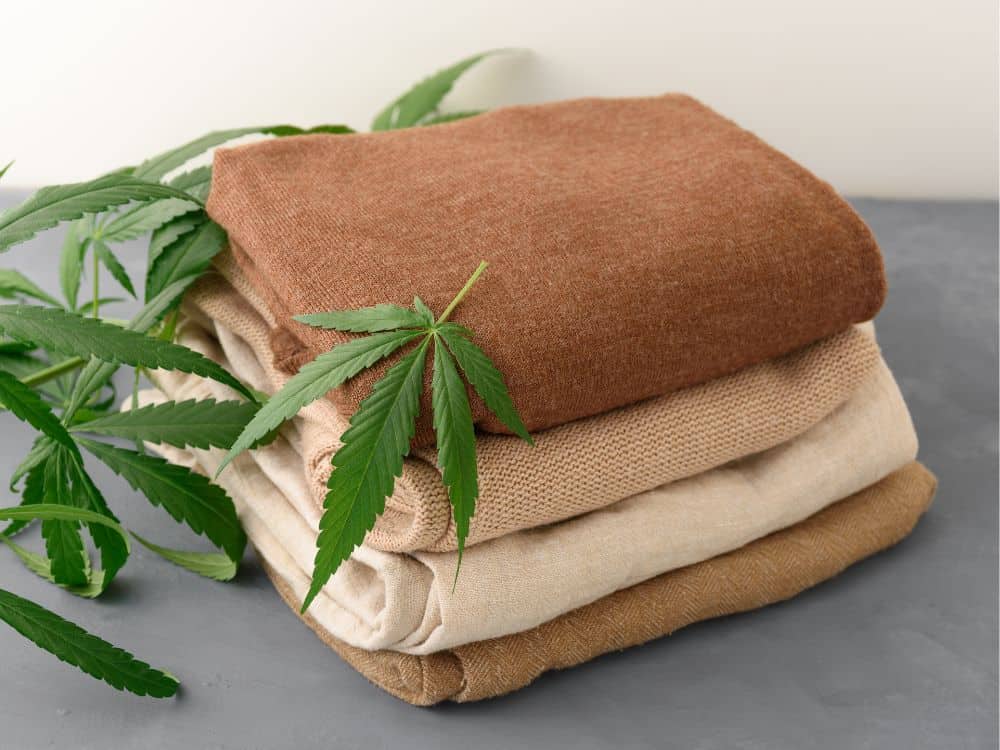Best Suggestions On Picking Hemp Clothing
Wiki Article
What Are The Benefits That Hemp Clothing Made Of Low-Impact Fibres Can Offer The Environment.
Clothing made of low-impact hemp fiber has numerous environmental advantages compared to other textiles. This includes clothing made using synthetic fibers or traditional cotton. Here are a few important environmental benefits of hemp clothing- Sustainable FarmingHemp - Hemp is a eco-friendly crop. It grows rapidly and requires minimal water, pesticides, and herbicides in comparison to other crops. Hemp is able to thrive in all conditions and soil types. This helps reduce the use of chemical pesticides in agriculture.
Reduced Water UsageLower Water Consumption Hemp generally requires less water than conventional cotton, which is renowned for its high water consumption. This makes hemp an eco-friendly choice for clothes.
Hemp is typically produced without the use of synthetic pesticides. Pesticides are not needed. This reduces the environmental harm that comes with farming using chemicals.
Hemp is beneficial for the health of soil. The deep roots of the plant stop erosion and compaction. It also leaves the soil in better condition for the future growth of crops.
Biodegradability Hemp fibers are biodegradable and disintegrate naturally over time, reducing the environmental impact of waste textiles. Contrary to synthetic fibers such as polyester that can require thousands, or even hundreds of years to break down.
Low carbon footprint - Hemp fibers have a smaller carbon footprint than synthetic materials. Hemp also acts as a sink for carbon dioxide through the absorption of carbon dioxide from air during the growth process.
Hemp clothing is durable and can last for many years. Hemp garments of good quality can last for many years. They reduce the requirement for replacements and also help to reduce consumption.
Natural Pest Resistance- Hemp plants have natural resistance to many pests, reducing the need for chemical insecticides.
Hemp offers a broad range of applications in textiles, like bags, accessories, clothing and much more. This makes it an eco-friendly, versatile option for fashion and textiles.
Regenerative Agriculture. Certain sustainable farming methods incorporate hemp into regenerative farming systems that aim to improving and restoring ecosystems while cultivating crops. This strategy could positively impact the natural environment.
It is important to remember that, while hemp can provide numerous environmental benefits but the sustainability of clothing also depends on other factors like dyeing processes, transportation consumption, and so on. In addition, as in any other industry the standards of production and methods can vary. To ensure that you're getting the greatest environmental benefit, look for organic or sustainable hemp clothing. Check out the top hemp clothes advice for more recommendations including nomad hemp clothing, hemp apparel, hemp and cotton fabric, 100 hemp shirt, hemp underwear, hemp fleece fabric, hemp tees, patagonia hemp shorts, hemp t shirts wholesale, hemp fabric and more.

What Are The Benefits Of Hemp Fibers With Regard To Carbon Sequestration?
Carbon Sequestration Hemp fibers offer many environmental benefits such as sustainability, crop rotation, and carbon sequestration.
Hemp grows quickly and matures in 70-120 days dependent on the different conditions and types of growth. As part of photosynthesis, hemp plants absorb CO2 in the atmosphere during their rapid growth. Carbon uptake is a major factor in carbon sequestration and reduces CO2 levels in the air.
Biomass Production Hemp is renowned for its high biomass production. The dense foliage and long stalks of hemp yield huge quantities of organic matter. When this biomass is integrated in the soil or utilized for different purposes and uses, it could help in the building up of organic carbon in the soil, further sequestering carbon.
Sustainability:
Hemp crops need lesser herbicides and pesticides in comparison to other crops, like cotton. Hemp's natural resistance against many insects and diseases is reduced by chemical interventions. The organic hemp industry, particularly, emphasizes sustainability through the avoidance of synthetic chemicals.
Water Efficiency- Hemp is a relatively water-efficient crop that can flourish with minimal irrigation, especially when compared with more water-intensive crops such as conventional cotton. This is why it is more sustainable in areas that have limited water resources.
Soil Health- Hemp's deep root system is able to improve the soil's health. The hemp's roots help to prevent soil erosion, by stabilizing the structure of soil and decreasing runoff. Hemp cultivation can also boost the action of microbial organisms in soil. This helps to improve the cycle of nutrient and soil fertility overall.
Hemp can be used in the rotation of crops. Crop rotation is the process of rotating different crops in the same field for a period of time. It can aid in breaking pest and illness cycles and reduce soil depletion and strengthen soil structures. Hemp's role in crop rotation helps sustain farming practices.
Crop Rotation
Hemp can be a great addition to crop rotations alongside other crops like legumes, grains or vegetables. Diversification is crucial to maintain soil health, while reducing the threat of pests and illnesses that are unique to certain crops, and helping to ensure a balanced cycle of nutrients.
The roots of hemp are deep and are able to penetrate soils and open them up, reducing compaction. This improves water infiltration. The soil's structure is improved after a hemp harvest that benefits other crops.
Hemp fibers are a good option for crop rotation because of their fast expansion, the high yield of biomass, their low need for chemicals, high water efficiency, positive impact on soil health, and compatibility. This makes hemp cultivation an environmentally sustainable and regenerative farming practice. The resultant fibers are a green alternative for textiles as well as other uses. View the best hemp clothing for site examples including hemp t shirts wholesale, hemp apparel, nomad hemp wear, t shirt hemp, mens hemp t shirts, nomad hemp wear, hemp pants womens, hemp fabric clothing, womens hemp clothing, patagonia iron forge pants and more.

What is the difference between bamboo and hemp fibers?
Bamboo and hemp are plant-based fibers that are utilized to make textiles. Each one has distinctive characteristic and properties. These are the main distinctions between bamboo and hemp fibers- 1. Plant Source-
Hemp- Hemp fibers are made from the hemp stalks plant, specifically from the bast fibers on the outside. Hemp has been used for a variety of reasons over the centuries. Hemp is a rapidly growing, versatile plant.
Bamboo fibers can be produced out of the pulp made by the bamboo plant. Bamboo is an extremely quick-growing grass that is known for its toughness and rapid renewal.
2. Fiber Characteristics
Hemp- Hemp fibers are well-known for their durability and strength. Hemp fibers are among the most durable natural fibers that soften with each wash, making them suitable for long-lasting textiles.
Bamboo fibers are soft and silky with a smooth, silky texture. The fibers are less strong than hemp, and are more fragile. But, they are highly prized for their comfort when placed against the skin.
3. Texture-
Hemp- Hemp fabrics have an abrasive, textured feel when they are in their natural state. It is comfortable but has a distinct feel compared to bamboo.
Bamboo- Bamboo fabric is smooth silky and incredibly soft. It's been described as feeling like silk and cotton.
4. Breathability is important, as well as moisture-wicking.
Hemp- Hemp is naturally and breathable. Hemp also absorbs moisture. They keep you cool and dry in hot temperatures.
Bamboo fibers can also be highly air-tight. They are moisture-wicking. They also have micro-gaps which increase their capacity to regulate moisture and temperature, ensuring you are comfortable in various conditions.
5. Environmental Impact-
Hemp Hemp is a kind of fiber that's considered eco-friendly due to the fact that it needs minimal water, grows quickly and has a good resistance to pests. It also reduces pesticide and herbicide use. Hemp is also able to sequester carbon from the atmosphere throughout its growth.
Bamboo is a popular choice for building materials that are sustainable. It is fast growing, requires little water, and does not require synthetic pesticides. Certain bamboo varieties, such as Moso bamboo are very eco-friendly.
6. Processing-
Hemp- Hemp requires extensive processing to separate its bast fibers (outer woody core) from the inner woody fibers. The process may involve retting, decoration, and mechanical separation.
Bamboo- Bamboo Fibers can be produced through a chemical process known as the viscose/rayon method. The bamboo pulp is broken down using chemicals. This can be damaging to the environment if it is not properly handled. However, certain bamboo textiles employ closed-loop systems that minimize the waste of chemicals.
7. Versatility-
Hemp- Hemp can be used to make a variety items, such as clothes papers, textiles and building materials.
Bamboo- Bamboo fibres are used predominantly in clothing and textiles however, they can be found in other items such as towels and bedding.
Summary The two types of bamboo offer unique benefits and are environmentally sustainable. Select between bamboo and hemp based on the qualities and properties that you're looking for as well as your preferences regarding the environment. Take a look at the best our site about bamboo clothes for site recommendations including bamboo family pajamas, clothes made from bamboo fiber, womens bamboo t shirts, childrens bamboo socks, kate quinn bamboo, jacket bamboo, bamboo yoga pants, bamboo fishing shirts, bamboo cotton shirts, jacket bamboo and more.
